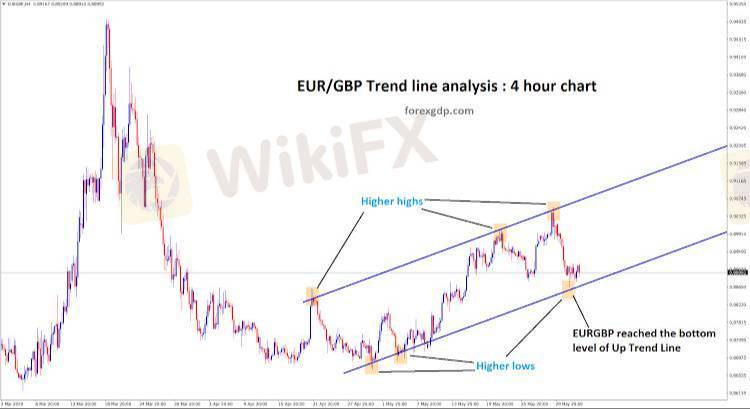
2025-04-28 12:52
IndustryPredicting regulatory impacts onforex volatility
#CurrencyPairPrediction
Predicting the impact of regulatory changes on Forex volatility is a complex undertaking, as regulations can manifest in various forms and target different aspects of the financial markets. Generally, regulatory interventions aim to foster stability, transparency, and reduce systemic risk. However, their effect on Forex volatility can be multifaceted and sometimes counterintuitive.
Increased Transparency and Reduced Information Asymmetry: Regulations that mandate greater transparency in trading activities, such as reporting requirements and increased oversight of market participants, can potentially reduce volatility. By leveling the playing field and diminishing information asymmetry, these rules can curb speculative excesses driven by opaque practices, leading to more orderly price movements.
Leverage Restrictions: A common regulatory tool is the imposition of leverage limits on Forex trading. By restricting the amount of borrowed capital traders can use, regulators aim to reduce the potential for amplified gains and losses. This can lead to decreased trading volumes from highly leveraged participants, potentially dampening volatility.
Market Manipulation Prevention: Regulations focused on preventing market manipulation, such as stricter surveillance and penalties for illicit activities, can contribute to a more stable trading environment. By deterring manipulative practices that can cause artificial price swings, these rules can help reduce unwarranted volatility.
Impact of Uncertainty: Conversely, the introduction of new or unexpected regulations can sometimes lead to a temporary increase in volatility. Regulatory uncertainty can cause market participants to reassess their strategies and positions, leading to increased trading activity and price fluctuations as the market adjusts to the new rules. The lack of clarity or the potential for future regulatory changes can also keep volatility elevated.
Cross-Border Regulatory Differences: The decentralized nature of the Forex market, with trading occurring across various jurisdictions with differing regulatory frameworks, can also contribute to volatility. Inconsistencies or conflicts in regulations between countries can create arbitrage opportunities or lead to regulatory arbitrage, potentially increasing market instability.
Specific Examples: The European Securities and Markets Authority's (ESMA) implementation of leverage restrictions for retail Forex traders is an example of a regulation aimed at reducing risk, which could, in turn, lower volatility in the retail segment. However, announcements of potential future regulations regarding cryptocurrency trading on Forex platforms might initially increase volatility as traders speculate on the implications.
In conclusion, predicting the impact of regulatory changes on Forex volatility requires a careful analysis of the specific regulations, their intended goals, and the potential behavioral responses of market participants. While many regulations aim to reduce excessive volatility and promote market stability in the long run, the introduction and the uncertainty surrounding new rules can sometimes lead to short-term spikes in volatility. Continuous monitoring of regulatory developments and their market impact is essential for Forex traders and analysts.
Like 0
Lumpur
Trader
Hot content
Industry
Event-A comment a day,Keep rewards worthy up to$27
Industry
Nigeria Event Giveaway-Win₦5000 Mobilephone Credit
Industry
Nigeria Event Giveaway-Win ₦2500 MobilePhoneCredit
Industry
South Africa Event-Come&Win 240ZAR Phone Credit
Industry
Nigeria Event-Discuss Forex&Win2500NGN PhoneCredit
Industry
[Nigeria Event]Discuss&win 2500 Naira Phone Credit
Forum category

Platform

Exhibition

Agent

Recruitment

EA

Industry

Market

Index
Predicting regulatory impacts onforex volatility
 Thailand | 2025-04-28 12:52
Thailand | 2025-04-28 12:52#CurrencyPairPrediction
Predicting the impact of regulatory changes on Forex volatility is a complex undertaking, as regulations can manifest in various forms and target different aspects of the financial markets. Generally, regulatory interventions aim to foster stability, transparency, and reduce systemic risk. However, their effect on Forex volatility can be multifaceted and sometimes counterintuitive.
Increased Transparency and Reduced Information Asymmetry: Regulations that mandate greater transparency in trading activities, such as reporting requirements and increased oversight of market participants, can potentially reduce volatility. By leveling the playing field and diminishing information asymmetry, these rules can curb speculative excesses driven by opaque practices, leading to more orderly price movements.
Leverage Restrictions: A common regulatory tool is the imposition of leverage limits on Forex trading. By restricting the amount of borrowed capital traders can use, regulators aim to reduce the potential for amplified gains and losses. This can lead to decreased trading volumes from highly leveraged participants, potentially dampening volatility.
Market Manipulation Prevention: Regulations focused on preventing market manipulation, such as stricter surveillance and penalties for illicit activities, can contribute to a more stable trading environment. By deterring manipulative practices that can cause artificial price swings, these rules can help reduce unwarranted volatility.
Impact of Uncertainty: Conversely, the introduction of new or unexpected regulations can sometimes lead to a temporary increase in volatility. Regulatory uncertainty can cause market participants to reassess their strategies and positions, leading to increased trading activity and price fluctuations as the market adjusts to the new rules. The lack of clarity or the potential for future regulatory changes can also keep volatility elevated.
Cross-Border Regulatory Differences: The decentralized nature of the Forex market, with trading occurring across various jurisdictions with differing regulatory frameworks, can also contribute to volatility. Inconsistencies or conflicts in regulations between countries can create arbitrage opportunities or lead to regulatory arbitrage, potentially increasing market instability.
Specific Examples: The European Securities and Markets Authority's (ESMA) implementation of leverage restrictions for retail Forex traders is an example of a regulation aimed at reducing risk, which could, in turn, lower volatility in the retail segment. However, announcements of potential future regulations regarding cryptocurrency trading on Forex platforms might initially increase volatility as traders speculate on the implications.
In conclusion, predicting the impact of regulatory changes on Forex volatility requires a careful analysis of the specific regulations, their intended goals, and the potential behavioral responses of market participants. While many regulations aim to reduce excessive volatility and promote market stability in the long run, the introduction and the uncertainty surrounding new rules can sometimes lead to short-term spikes in volatility. Continuous monitoring of regulatory developments and their market impact is essential for Forex traders and analysts.
Like 0
I want to comment, too
Submit
0Comments

There is no comment yet. Make the first one.

Submit
There is no comment yet. Make the first one.